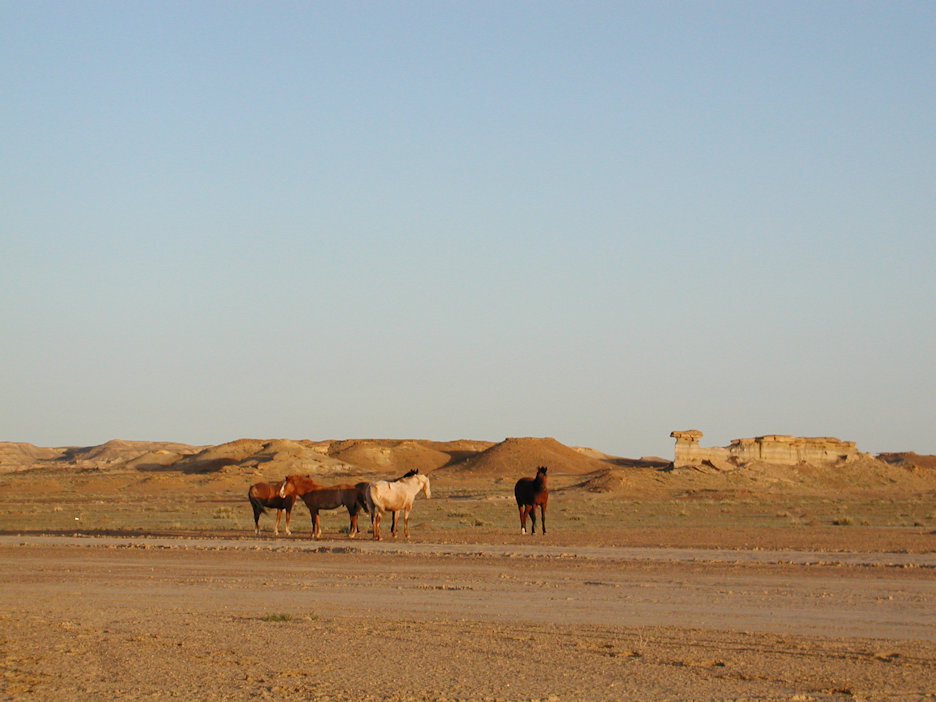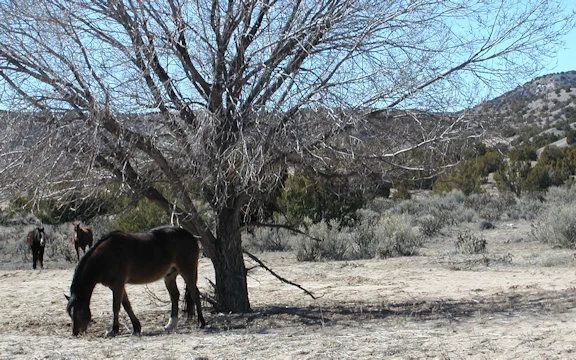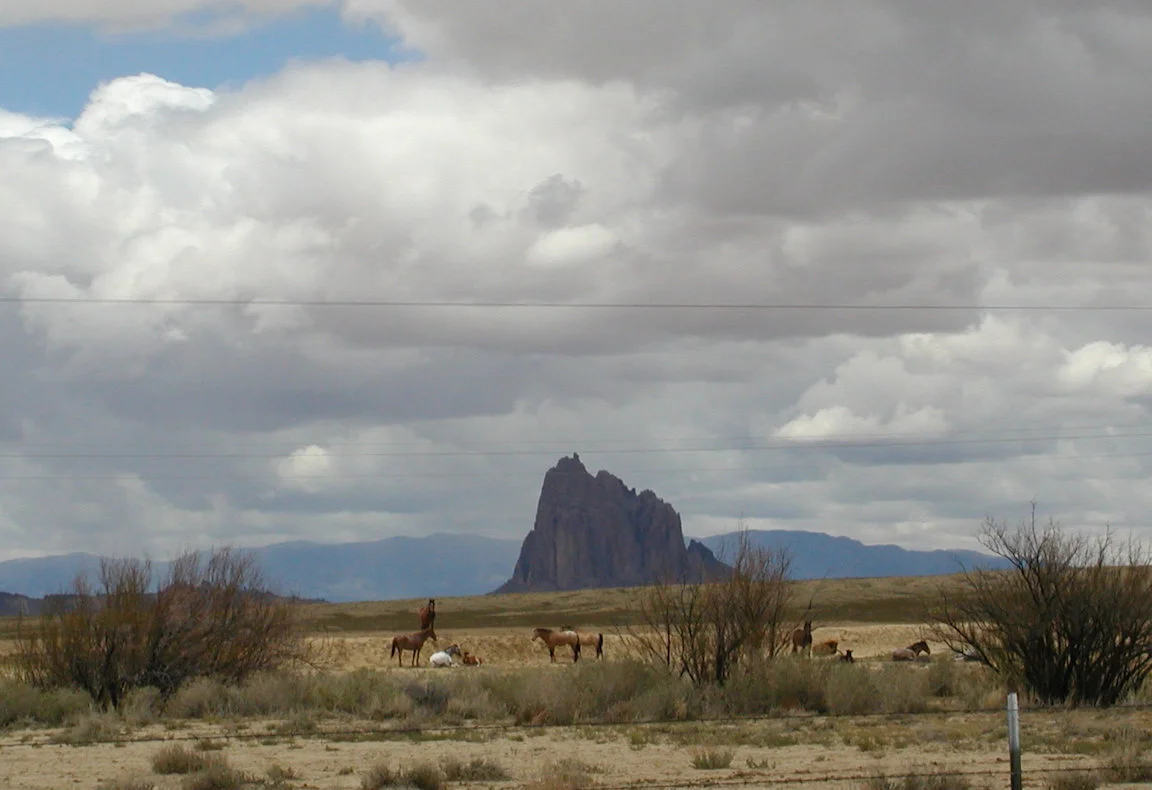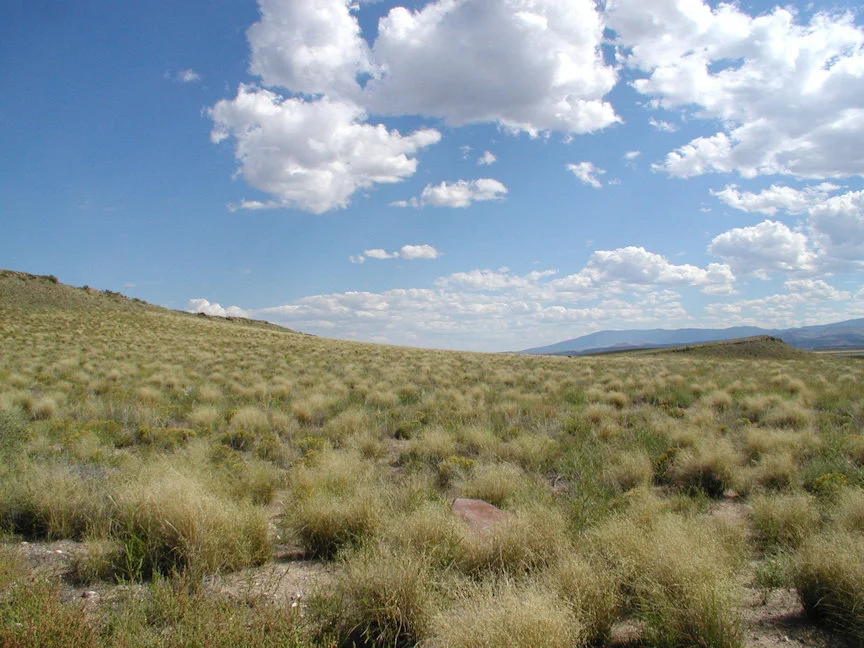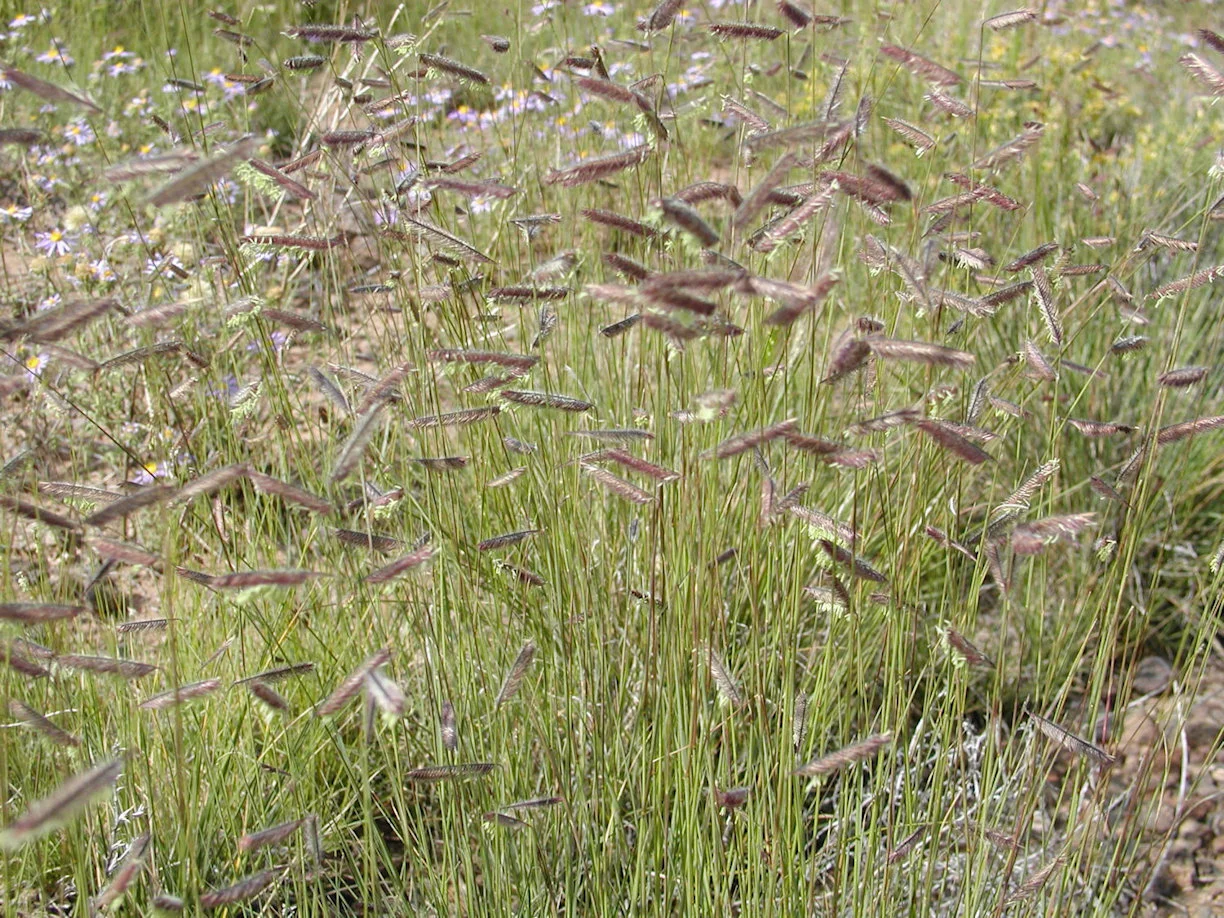What wild horses eat
These feral horses on the Navajo reservation look just fine with very little green in sight. They travel all day to get enough to eat and drink. If you put these horses in a paddock of thick, nutrient-dense grass, they would be high risk for lamintis, too.
Feral horses in Australia travel many miles per day for water with very little feed available. Yet these horses look pretty good. So why are we feeding horses the same as cows?
Just a bit of green native grass from recent rain, and these brumbies are fat. They will get thin during the next dry season, which will give them some protection metabolically for the next season with abundant grass. These horses adapt well to feast and famine. It’s natural.
I’m sure these ponies get some hay thrown to them once a day, but the rest of the time they are traveling around this large section of scrub brush in northern New Mexico. How lucky we would all be to have such a perfect place for an easy-keeper pony.
These horses look to be in great shape, even the mares with foals. THIS is the environment that shaped the metabolism of wild horses. No wonder when we keep them belly deep in grass bred to fatten cows they get sick.
This is a very common native grass that feral horses eat. When compared to common improved grasses, it is much lower in sugar and starch. there is also a lot of bare ground in-between bunches, so horses have to travel farther to eat.
This grass is a common native grass all over the SW portion of the USA. As a C4, warm season grass, it springs up quickly after summer rains. Compared 23 other species of grass it was nearly always the lowest in sugar and starch all through the growing season. A low producer, but it is possible to get one cutting of hay when grown under irrigation and optimal management.
Ryegrass, tall fescue, and timothy were the highest in NSC. Grasses native to the region were the lowest: Indian ricegrass, big bluegrass, blue gramma. Most common improved grasses were 3X higher in NSC at the colder test site.
This newly planted paddock of mixed native grass will require several applications of herbicide, even after 2 applications of Roundup before planting. Native grasses are less competitive and need a lot of help for successful establishment.
I found a farmer nearby that was growing blue gramma for native grass seed. After the seed was removed, the straw tested out to be the perfect feed for my ponies with EMS. Just a few pounds of low NSC alfalfa and a ration balancer was the basis of their low sugar diet. The big bonus was they could eat this free choice!

